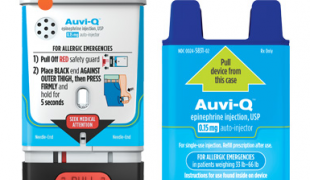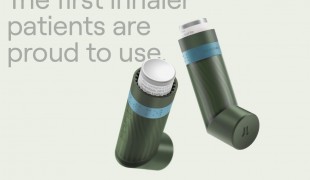- 11784
- 599
- 23
- 17
- 6
- Help Ukraine
About the solution
Solution for pulmonary disease necessitating at home oxygen therapy.
Some pulmonary diseases are affecting the lungs in a way where the need for oxygen varies depending on the activities of the patient. In example, a patient sitting down may need 1L per minute of continuous oxygen; when walking that oxygen need may increase to 2L per minute, when walking up a flight of stairs that need may increase to 3L per minutes.
One problematic:
Medical point of view:
The oxygen consumption of the patient must stay to a bottom limit. If the patient uses more oxygen than he/she requires, he/she will increase the chance to retain CO2 and suffers on long-term of CO2 intoxication.
When a patient increase his activities but has insufficient oxygen, the patient will suffer from hypoxia. The heart will try to compensate and that will make the effort much more demanding to a point where the effort needed can sometimes not be done. Hypoxia can set in very quickly.
So, bottom line, the patient sitting down with 1L of oxygen must change the flow of oxygen to 2 L when he starts to walk, then when sitting down again, the flow must be adjusted back to 1L.
Physical point of view:
In home oxygen therapy an oxygen concentrator is often use to deliver the extra supply of oxygen through an oxygen tube. The concentrator is a loud, heat-producing device. It is usually place as far as possible to where the patient and its family live.
The problem is that the patient needs a second person to adjust the oxygen flow depending on his need.
The solution:
Is to simply rig the oxygen concentrator flowmeter with a remote control motor.
The patient has a remote controlled transmitter, a flowmeter and a oximeter.
The patient can adjust the flow of oxygen from a distance before and after an activity.
The patient can validate the flow he/she receives with his/her flowmeter. Also the patient can monitor his/her oxygen blood saturation using his/her oximeter.
The results:
Having the oxygen adjusted to the right level for the activities of a patient results in a greater comfort (not being out of breath all the time), better activities, less fatigue, better health for the organs in general.
This solution shall not include mention to the use of drugs, chemicals or biologicals (including food); invasive devices; offensive, commercial or inherently dangerous content. This solution was not medically validated. Proceed with caution! If you have any doubts, please consult with a health professional.
-
• Fri, 10/24/2014 - 19:36
• Tue, 10/28/2014 - 01:29
• Fri, 07/26/2019 - 03:47
https://adelaidetowingcompany.com.au/
Great read on home oxygen therapy and how it relates to those of us who need it. For more information from a great Adelaide appliance repairs service• Fri, 07/26/2019 - 03:50
https://orlandoappliancerepaircompany.com
Great information for those looking for Savannah Towing
-
-
650
-
0
-
9631

Patient develops wearable for Asthma
VENTILATION
CAREGIVING
Asthma
Assistive Daily Life Device (to help ADL)
Treatment/Surgical device
App (Including when connected with wearable)
Pharma
Improving respiratory function
Promoting self-management
Manage Medication
Preserving Organ Function
To implement a diagnostic tool
Alleviating Allergies
To improve Treatment/Therapy
Preventing (Vaccination, Protection, Falls, Research/Mapping)
Caregiving Support
General and Family Medicine
Immuno-allergology
Pneumology
Australia
-
-
-
658
-
0
-
9627

Twins create Auvi Q to help themselves fighting life threatening allergies
CAREGIVING
VENTILATION
Allergic reaction (food
drugs
material/chemicals)
Assistive Daily Life Device (to help ADL)
Treatment/Surgical device
Promoting self-management
Manage Medication
Preserving Organ Function
To improve Treatment/Therapy
Preventing (Vaccination, Protection, Falls, Research/Mapping)
Raise awareness
Caregiving Support
Dermatology
General and Family Medicine
Intensive Care Medicine
Pediatrics
United States
-
-
-
385
-
0
-
4868

Purcell – The drive to solve the problems with aerosolized drug delivery for a best friend.
VENTILATION
CAREGIVING
Asthma
Treatment/Surgical device
Fatigue
Difficulty breathing deeply
Improving respiratory function
Enhancing health literacy
Promoting self-management
Manage Medication
Preventing (Vaccination, Protection, Falls, Research/Mapping)
Raise awareness
Caregiving Support
General and Family Medicine
Infectious Diseases
Pediatrics
Pneumology
United Kingdom
-
This work is being financed by the FCT project with the reference PTDC/EGE-OGE/7995/2020
Copyright © 2025 Patient Innovation.
Powered by Orange Bird
Not a member yet? Register now, it's free!
 en
en
Josée Ruel • Mon, 10/20/2014 - 00:44
Bravo!